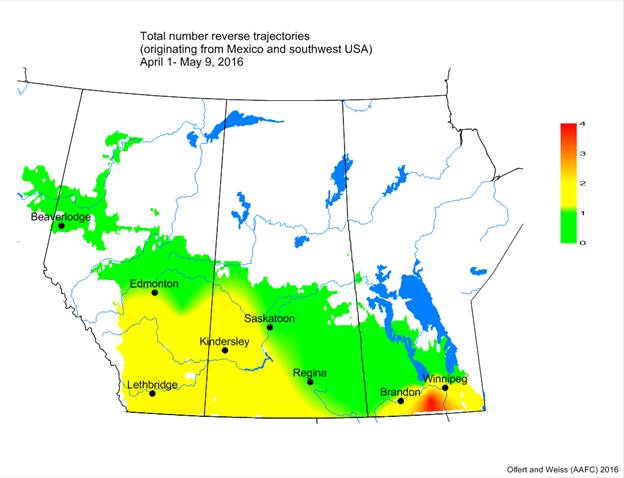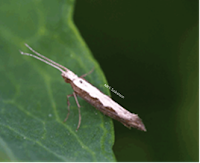THE WEEK OF MAY 9, 2016: Wind trajectory data processing by AAFC-Saskatoon Staff began in April. Reverse Trajectories track arriving air masses back to their point of origin while Forward Trajectories predict favourable winds expected to arrive across the Canadian Prairies for the week of May 9, 2016:
Reverse trajectories (RT)
Naicam, Regina, Tisdale (Saskatchewan) and Lethbridge, Beiseker (Alberta) had the first occurrences of Reverse Trajectories this week that originated from southwestern USA and /or Mexico.
Forward Trajectories (FT)
There are four forward trajectories from California and Texas that are predicted to cross the prairies over the next 5 days. Below is a map of the sites from which the Forward Trajectories originated that crossed the prairies over the past month.
Review the 2016 Wind Trajectory Updates in PDF format.
Weather forecasts (7 day):
Winnipeg: https://weather.gc.ca/city/pages/mb-38_metric_e.html
Brandon: https://weather.gc.ca/city/pages/mb-52_metric_e.html
Saskatoon: https://weather.gc.ca/city/pages/sk-40_metric_e.html
Regina: https://weather.gc.ca/city/pages/sk-32_metric_e.html
Edmonton: https://weather.gc.ca/city/pages/ab-50_metric_e.html
Lethbridge: https://weather.gc.ca/city/pages/ab-30_metric_e.html
Grande Prairie: https://weather.gc.ca/city/pages/ab-31_metric_e.html
















